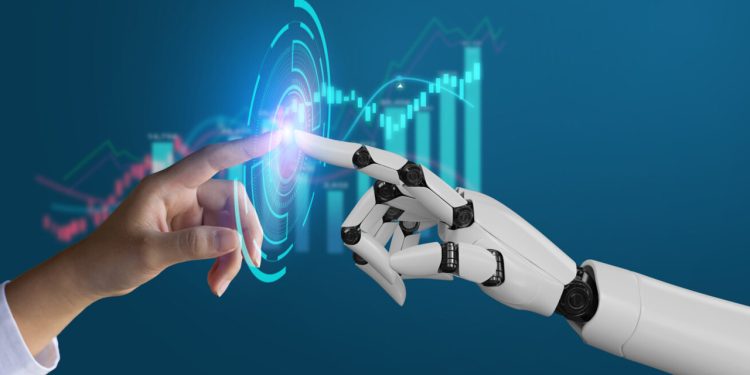Artificial Intelligence an introduction
The term “artificial intelligence” (AI) belongs to a group of technologies that allow computers to do difficult tasks like understanding languages, seeing, analysis of data, and intelligent suggestions. AI propels innovation in modern computing and offers both customers and companies major benefits.

Optical character recognition (OCR) illustrates turning unorganized content into organized data and insights using AI.
Explaining Artificial Intelligence:
The goal of artificial intelligence (AI) is to build robots that can learn, examine, and carry out tasks that traditionally need human cognition or handle extremely large data.
 The field of artificial intelligence (AI) covers multiple academic fields, such as computer science, data analysis, hardware and software engineering, the field of linguistic neurology, and even philosophy and psychology.
The field of artificial intelligence (AI) covers multiple academic fields, such as computer science, data analysis, hardware and software engineering, the field of linguistic neurology, and even philosophy and psychology.
Deep learning and machine learning are the key elements of AI in real-world business applications. Data analysis, predictive modeling, sorting objects, natural language processing, ideas, and intelligent data retrieval are just a few of the many tasks that AI can perform.
Various Forms of Artificial Intelligence:
Artificial intelligence is all about introduction of new world. According to the state of its evolution or the specific job at hand, artificial intelligence might be classified differently.
1: Reactive systems are a sort of limited AI because they are unable to learn from new data and instead react to various inputs according to established standards. IBM’s Deep Blue, which in 1997 defeated world chess champion Garry Kasparov, serves as an example.
2: Deep learning and neural network training are two methods that help modern short-term memory AI get better.
3: The idea of mind Research and development on AI are still underway. Although such skills do not yet exist, it predicts AI systems that may duplicate human thinking, decision-making, feelings, and relationships at a human level.
4: Self-aware AI, like the theory of mind AI, is still a theoretical idea, but it believes in artificial intelligence with human-like self-awareness, thinking, and emotions.
A machine’s ability to “sense, think, and act” like a person is referred to as artificial general intelligence (AGI). AGI hasn’t yet been reached. Artificial intelligence (ASI), the next step, is when a machine surpasses humans in every way.
Models Used in Artificial Intelligence Training:
The phrase “training data” regularly appears when firms study AI. But what does it actually mean? This describes the process of enhancing AI performance through access to new data in the setting of limited-memory AI. Machine learning, a branch of artificial intelligence, uses computers to train data to produce desired results.
Three models for learning in computer intelligence:
1: Using labeled training data, often categorized, supervised learning entails mapping specific inputs to outputs. Simply put, labeled cat images are used to train an algorithm to recognize images of cats.
2: A machine learning approach called supervised learning makes patterns out of unlabeled, raw data. Result not fixed, unlike supervised. Instead, the system mines the material for information and divides it into groups according to its appropriate. Tasks like identifying patterns and narrative modeling are where machine learning shines.
3: The machine learning approach that is developed by experience reflects a “learn by doing” strategy. According to this approach, an “agent” repeats through trial and error, creating a feedback loop to improve its skills in a certain activity until it reaches certain standards. Success rewarded; failure corrected. A good example of this technique is teaching a robotic hand to grip a ball through practice.
Common Types of Artificial Neural Networks:
Artificial intelligence is all about introduction of new world and era.The artificial neural network, partly based on the human brain, is a common AI training model. Perceptron are artificial neurons. The first layer receives input data, makes decisions, and sends information to the layer nodes after it. Deep neural networks typically have four or more layers, with some modern networks having hundreds or thousands. The final perceptron’s output successfully completes the intended task, such as classifying objects or recognizing data patterns.
Here are a few examples of popular artificial neural network types:
1: In deep feedback neural networks (FF), data passes freely across several layers of cells. For higher accuracy, they use “recognizer” and hidden layers. Deep predict neural networks are a class of simple yet very efficient neural networks.
2:Recurrent neural networks, also known as RNNs, differ from feedforward networks, which use single node weights, in that they can handle time series data by integrating information from earlier layers into the output of the current layer. RNNs, for instance, remember the words that came before them in a sentence while processing natural language. Speech recognition, translation, and captioning for images are a few applications for RNNs.
3: A more advanced kind of RNN known as long/short-term memory (LSTM) is able to keep data from earlier levels by using “memory cells.” In contrast with traditional RNNs, LSTM can access data that exists several layers deep. The LSTM is used for forecast and speech recognition tasks.
4: Convolutional neural networks (CNNs) in AI. They are particularly well-known for being successful at recognizing images. Convolutional neural networks (CNNs) use specialized layers like pools of convolution to analyze multiple elements of an image before merging their results in the fully connected layer. Convolutional algorithms with more layers can find complex features.
5: In the case of generative adversarial networks (GAN), two neural networks engage interactively to play a game that improves the output’s precision over time. The choosy network tries to determine if the instances created by the generator network are real or not. Applications for GANs include producing realistic images and artistic works.










